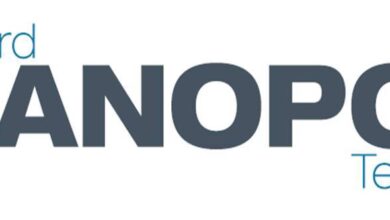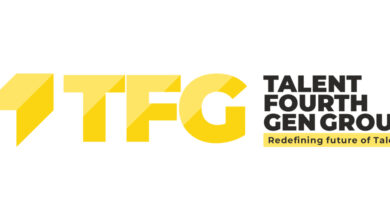Global and China Automotive Smart Antenna Research Report 2023 Featuring 8 International Manufacturers, 8 Chinese Manufacturers, & 19 Smart Antenna Integrators – ResearchAndMarkets.com

DUBLIN–(BUSINESS WIRE)–The “Global and China Automotive Smart Antenna Research Report, 2022-2023” report has been added to ResearchAndMarkets.com’s offering.
The integration of automotive antennas and intelligent connected terminals tends to accelerate
The development trend of automotive antennas: tend to be intelligent, diversified and integrated
Automotive antennas have entered an era of intelligence. OEMs place a higher premium on the application of antenna functions amid V2X and smartphone integration, thereby facilitating the intelligent, diversified, and integrated development of automotive antennas.
As new technologies such as 5G and MIMO find application, antenna manufacturers also endeavor to research anti-jamming and all-in-one antenna technologies, that is, ensuring that multiple automotive antennas of different types work normally and independently in multi-antenna integration.
Main development trends of automotive antennas:
Intelligent: integrated with intelligent connected terminals, and applied to ADAS and V2X scenarios, e.g., Continental’s shark fin antenna;
Integrated: more common in high-end vehicle models, adopt hidden antenna design, and highlight the reinforced anti-jamming performance of different types of antennas, e.g., SPEED’s all-in-one antenna;
Diversified: bring antenna functions into full play in different scenarios, and use all-in-one antenna technology, e.g., Glead’s multi-mode antenna and YOKOWO’s combined shark fin antenna.
Foreign first-tier automotive antenna manufacturers are led by Continental, TE Connectivity, Harada Industry and Ficosa. They use all-in-one antenna technology to integrate AM/FM/cellular/GNSS antennas into the shark fin and combine them with intelligent connected terminals.
For example, the shark fin antenna provided by Continental for OEMs like Volvo and BMW is integrated with T-Box and uses smart antenna modules to simplify the antenna layout of the car body; Bosch has also developed a smart antenna akin to the T-Box-integrated smart antenna.
Chinese automotive antenna manufacturers include Harxon, Desay SV, SPEED, Sunway Communication, Lan-You Technology and Neusoft Group. They also master all-in-one antenna development technology, and have the ability to develop smart antennas that can be integrated with intelligent connected terminals. One example is Neusoft Group’s C-V2X smart antenna having been mounted on Hongqi E-HS9.
Conventional automakers: shark fin becomes the main carrier for vehicle smart antennas
Shark fin antenna was developed by BMW in 2001 and initially applied to E65/E66 in the fourth-generation BMW 7 Series. BMW then developed the second-generation shark fin antenna that directly connected the connected driving telematics module and the shark fin base and added a dedicated communication antenna for connected driving. It was used in the new BMW 7 Series models.
At present, the mainstream models in the 1 to 7 Series all use shark fin antennas, and only one model in the I Series and M Series each does not use. BMW’s shark fin antenna can integrate GSM antenna, GPS antenna, TCU emergency rescue antenna and DAB antenna (the integrated GSM antenna is used to amplify the phone signals in the car; the integrated GPS antenna is used for vehicle navigation and positioning; the integrated connected driving antenna is used for telecommunication). Its AM/FM antenna is installed at the rear windshield.
Auto brands with high market shares, including Volkswagen, Toyota, Audi, Honda, Buick and Changan, also favor shark fin antennas when choosing antenna solutions, and install them at the rear of the roof.
Emerging carmakers: underline differentiation of smart antenna solutions
Unlike conventional automakers using shark fin antennas, emerging carmakers prefer differentiation when selecting smart antennas. Among them, NIO chooses a camera-equipped shark-fin antenna structure as the smart antenna solution for its new models; Xpeng Motors and Li Auto integrate smart antennas into the roof rack and spoiler, respectively, for the latest models to make them look more sleek-framed; Tesla chooses to integrate the antenna module into the crossbar of the car body to further simplify the antenna layout.
New Tesla Model 3/Y has placed WiFi and 4G LTE antennas in crossbar in the middle of the sunroof above the B-pillar; the GPS antenna module of Model 3 is located above the interior rearview mirror in the same space as the camera module.
NIO ES7/8, ET7/5, and EC7 are all equipped with a shark fin antenna structure (with a camera) at the rear of the roof and above the trunk. For example, the shark fin antenna of ES7/8 integrates a rearview driving assistance camera and 5G communication module; the shark fin antenna structure of ET7/5 highlights camera design in appearance.
Xpeng G9 uses a hidden 5G antenna and integrates it into the roof rack. This antenna can support high-speed data transmission for the car.
Li Auto ONE packs a shark fin antenna, while the automaker switches to a spoiler-integrated antenna for models from L7 to L9. The antenna accessories for the L7 to L9 models are all provided by SPEED, including 5G antenna, high-precision positioning antenna and radio amplifier. Li Auto L9’s Bluetooth antenna can sense both horizontal/vertical coordinates and height of the user’s smartphone.
Key Topics Covered:
1 Overview of Automotive Antenna
1.1 Classification of Automotive Antenna
1.1.1 Classification of Automotive Antenna
1.1.2 Principle of Automotive Antenna
1.1.3 Structure – BMW Antenna Dismantling
1.2 Development Trends of Automotive Antenna
1.2.1 Status Quo
1.2.2 Development Trend 1: Structure Simplification
1.2.2 Development Trend 2: Intelligent
1.2.2 Development Trend 3: Integrated
1.2.2 Development Trend 4: Diversified
1.2.3 Application Scenario: V2X
1.3 Industry Chain
1.4 Automotive Antenna Market Size: Global & China
2 Global Automotive Antenna Manufacturers
2.1 Continental Automotive
2.2 TE Connectivity
2.3 Harada Industry
2.4 YOKOWO
2.5 NovAtel
2.6 Taoglas
2.7 Ficosa
2.8 Laird
3 Chinese Automotive Antenna Manufacturers
3.1 Harxon
3.2 Desay SV
3.3 SPEED
3.4 Glead Electronics
3.5 Zhejiang JC Antenna
3.6 HighGain Information
3.7 Sunway Communication
3.8 UB Electronic
4 Smart Antenna Integrators
4.1 Denso
4.2 Bosch
4.3 Harman
4.4 Lan-You Technology
4.5 Neusoft Group
4.6 Flaircomm Microelectronics
4.7 Jingwei HiRain
4.8 ECARX
4.9 GOSUNCN
4.10 INTEST
4.11 JOYNEXT
4.12 BICV
4.13 iGentAI computing
4.14 Sinocastel
4.15 SOFAR Communication
4.16 China Mobile IoT
4.17 Pulse Electronics
4.18 Quectel
4.19 MediaTek
4.19 Autus Chip Solution Integrated with Smart Antenna
5 OEMs’ Automotive Antenna Cooperation
5.1 Cooperation Modes
5.1.1 Automotive Antenna Application of Some OEMs
5.1.2 OEMs Co-developed with Antenna Manufacturers or Independently Developed Antennas
5.2 Volvo
5.3 BMW
5.4 NIO
5.5 Li Auto
5.6 XPeng Motor
5.7 Tesla
For more information about this report visit https://www.researchandmarkets.com/r/ee9jdb
About ResearchAndMarkets.com
ResearchAndMarkets.com is the world’s leading source for international market research reports and market data. We provide you with the latest data on international and regional markets, key industries, the top companies, new products and the latest trends.
Contacts
ResearchAndMarkets.com
Laura Wood, Senior Press Manager
[email protected]
For E.S.T Office Hours Call 1-917-300-0470
For U.S./ CAN Toll Free Call 1-800-526-8630
For GMT Office Hours Call +353-1-416-8900




